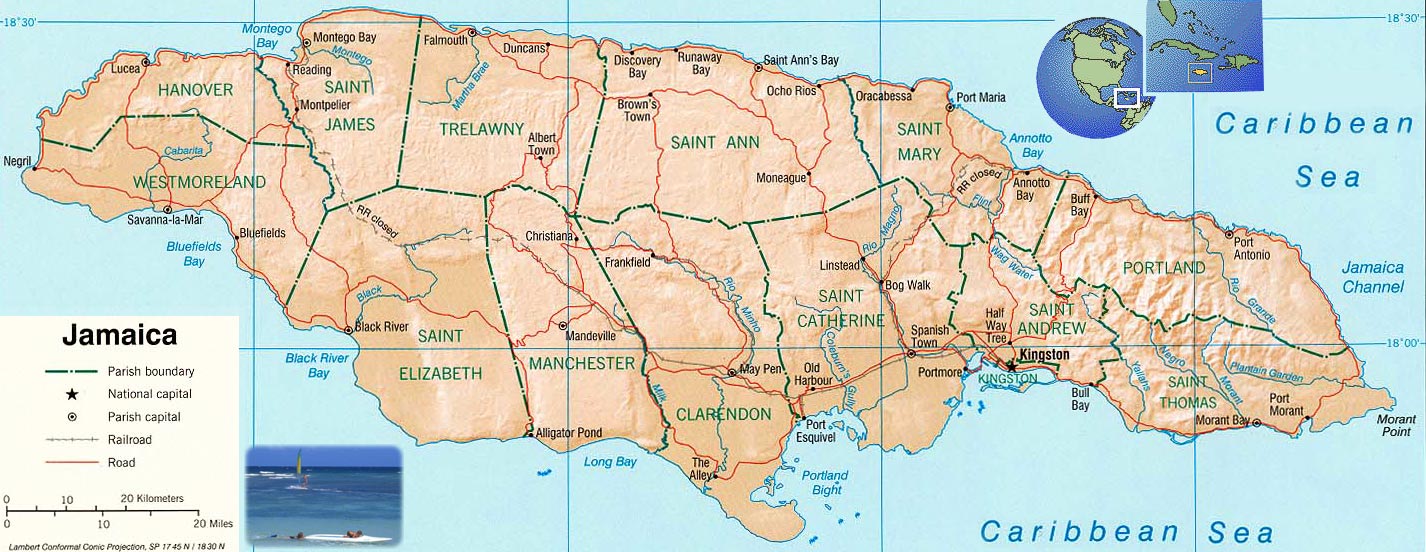
|
|

St Catherine (capital Spanish Town) is a parish located in the south east of Jamaica. It is located in the county of Middlesex, and is one of the island's largest parishes. It includes the first capital of Jamaica, Sante Jago De La Vega, currently known as Spanish Town.
Geography and people
St Catherine is located at latitude 18°15'N, longitude 77°12'W. It is bordered by St Andrew in the east, Clarendon in the west, and by St Mary and St Ann in the north. It has an area of 1,192 sq km, making it Jamaica's fourth-largest parish. Except for the Hellshire Hills near the coast, the south of the parish is virtually flat. The central and northern sections are very mountainous, however; the northern border is on Mount Diablo, which crosses over into St Ann, the highest point being 686 metres (2,700 ft).
A plain of approximately 57,000 acres (230 km²) occupies the southern part of the Rio Cobre basin. The Rio Cobre is the only river that runs along the southern plain. It provides water to irrigate over 18,000 acres (73 km²) on the plain, and provides electricity for the capital and surrounding towns like Linstead, Riversdale, Old Harbour, and the urban sections of Kingston and St Andrew.
This parish also accounts for the largest population in the country, with well over half a million residents. Most people live in Portmore, the largest community in the Caribbean.
Brief history
|
Mazuela, recommended the
site that later became Santiago (or St Jago de la Vega). The parish was
formed in 1534 when the
boundaries of St Catherine were expanded to incorporate the former
parishes of St Dorothy, St John and St Thomas-in-the-Vale. It was named
after Queen Katherine of Portugal, King Charles II's
wife. Sugar cultivation and plantations were established even before the capital was transferred there in 1524 near to Mazuela's sugar mill. Time to time, life was threatened by raids from English pirates. In 1655 the English captured Jamaica from the Spaniards, who kept up guerrilla tatics for five years until they eventually abandoned efforts to recapture the island. The English renamed the town Spanish Town, and kept it as the administrative capital of the island. For two centuries it prospered, and was one of the most populus areas on the island. Taverns, theatres, a slave market and the prison —which still stands today— were established in the parish. During the 'dead season' on the sugar estates — October to December — planters and their families from all over Jamaica would converge on Spanish Town. Synagogues were also to be found in the parish. Since 1755 there had been lobbies from Kingston, by people who had wanted the capital transferred there. This was officially done in 1872 by the Governor Sir John Peter Grant. The boundaries of the present parish were established in 1867 when the number of parishes in Jamaica were reduced from 22 to 14. St Catherine was then expanded to include the former parishes of St Thomas-in-the-Vale, St John and St Dorothy.
|